In today’s world, self-defense isn’t just about physical techniques but also about navigating social dynamics and potential repercussions. This is especially true for QTBIPOC (Queer, Transgender, Black, Indigenous, People of Color) and transfeminine individuals, who face unique challenges and considerations. Threats to personal safety are an unfortunate reality for many queer people. It’s crucial to have strategies for self-defense that are tailored to the unique experiences and challenges faced by trans women and gender non-conforming individuals. Traditional self-defense tactics may not always be effective or appropriate when complex power dynamics, societal perceptions, and personal circumstances intersect.
Let’s review some strategies tailored to these communities, focusing on both verbal and non-verbal tactics, as well as the importance of teamwork and inconspicuous defense methods. Please note – Self-defense can be a heavy topic. The best approach to self-defense varies per person. Please use what you can from this information, and no pressure to use what doesn’t feel like a good fit! If you get tight, anxious, or emotional, try these relaxation techniques:
- shaking, wiggling, standing up & moving
- physiological sigh (2 breaths in, one breath out)
- butterfly hugs (bilateral tapping) with box breathing or verbal reassurances
Table of Contents
Understanding the concerns
What other people think
One major concern is how others perceive your actions. Will bystanders side against you due to transmisogyny or racism? Will you face consequences even after defending yourself, such as punishment from authorities or social ostracization? It’s vital to defend yourself while avoiding actions that might escalate the situation or lead to further scrutiny.
Being dependent on your attacker
For some individuals, their attacker may also be someone who provides resources or holds power over them, like a parent or employer. In such cases, openly defending yourself could risk losing these resources. It’s essential to strategize ways to defend yourself inconspicuously, without alerting your attacker.
Team strategy
Turning bystanders into allies
One effective approach is to turn bystanders into allies by communicating with them effectively. This involves asking for help, providing clear instructions, and even, at times, misleading the attacker to gain sympathy from bystanders.
Squad building
Building a support network, or “squad,” is crucial for long-term safety. This involves gradually evolving relationships with acquaintances into allies and friends who can provide support and protection when needed.
Lifestyle changes
Making lifestyle changes to avoid being alone can also enhance safety. This includes strategies like carpooling, living with roommates, or using location-sharing features on your phone to keep someone informed of your whereabouts.
Verbal tactics
Femme voice and fast talk
Using a femme voice or fast talk can disarm potential threats and disrupt their verbal agenda. These tactics can help control the conversation and create opportunities for de-escalation.
Bluffing and distraction
Bluffing about having backup nearby or using distraction techniques can buy time and create openings for escape or resolution. It’s essential to gauge the situation and adapt these tactics accordingly.
Non-verbal manipulation
Intimidation and manipulative fawning
Non-verbal cues, such as body language and demeanor, can influence the dynamics of a confrontation. Intimidation tactics can deter attackers, while manipulative fawning techniques can create the illusion of submission while maintaining control of the situation.
Inconspicuous defense and intimate grappling
Learning subtle grappling techniques and defensive maneuvers can be invaluable for self-defense, especially in intimate or close-quarters situations. These techniques focus on creating space, escaping grips, and maintaining control without drawing attention.
Navigating self-defense as a QTBIPOC or transfeminine individual requires a multifaceted approach that goes beyond physical techniques. By understanding the social dynamics at play, employing effective communication strategies, and mastering inconspicuous defense tactics, individuals can better protect themselves while minimizing risks and potential harm. Remember, self-defense is not just about physical strength but also about strategic thinking and empowerment.
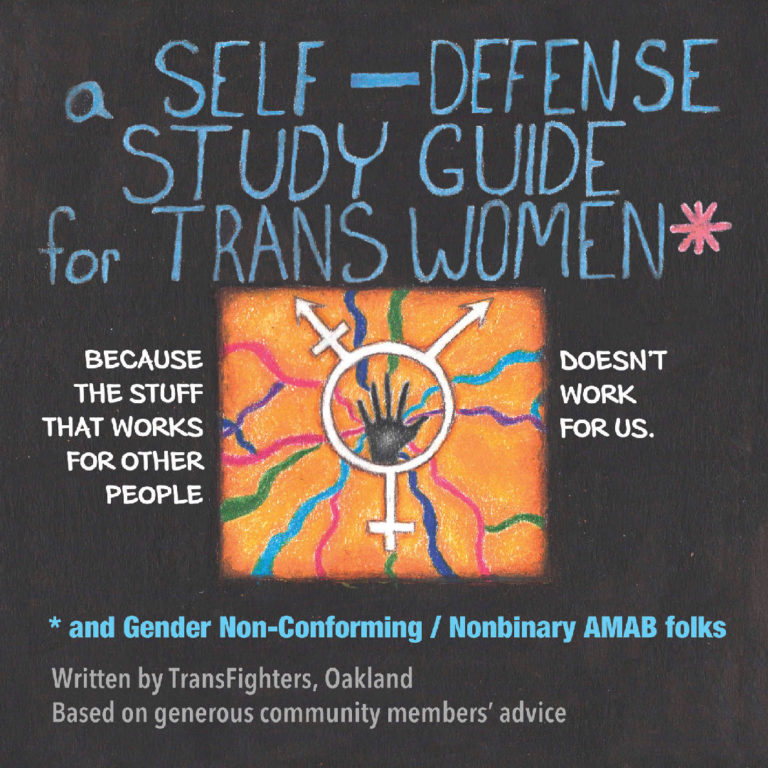

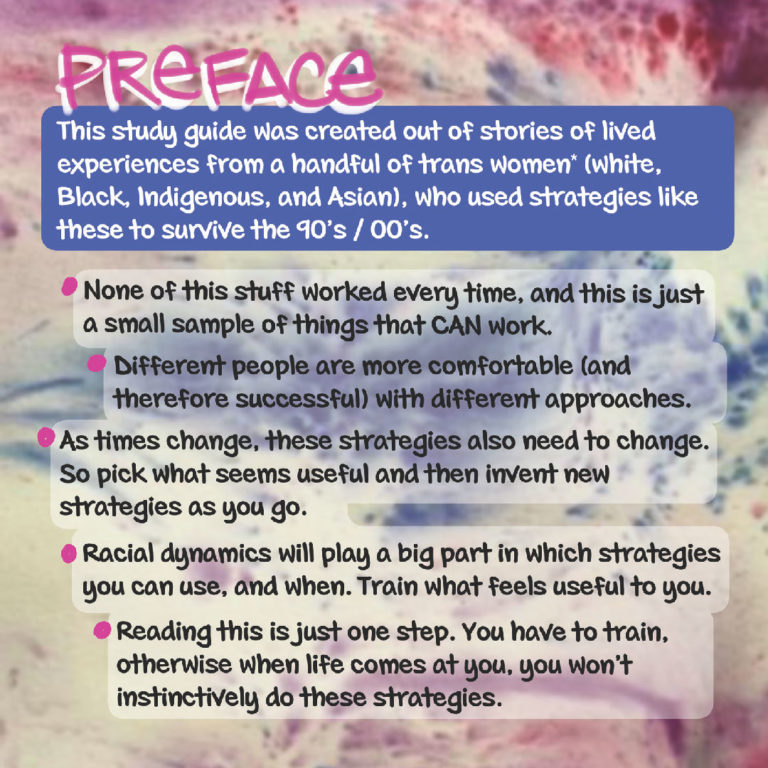
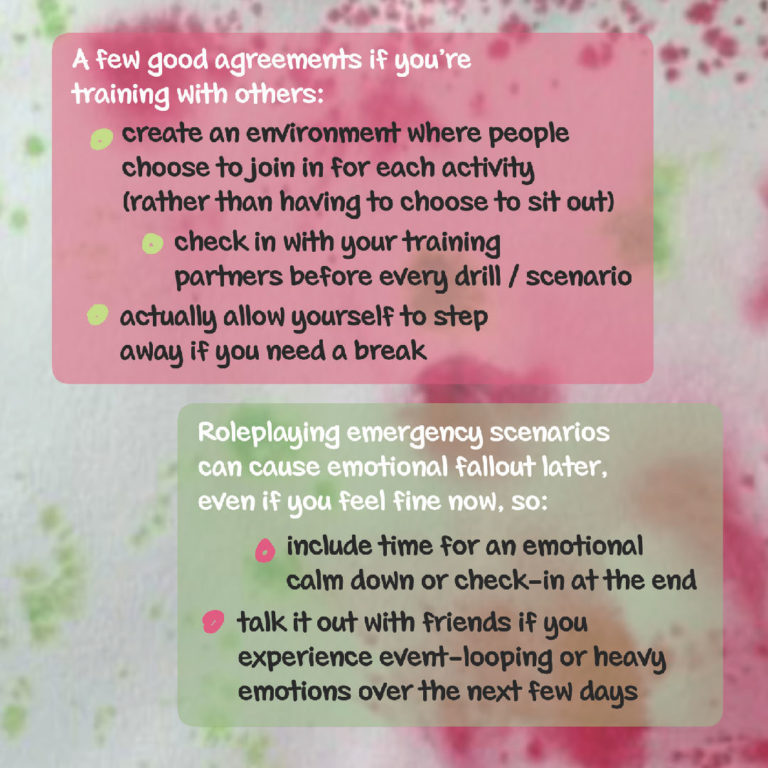
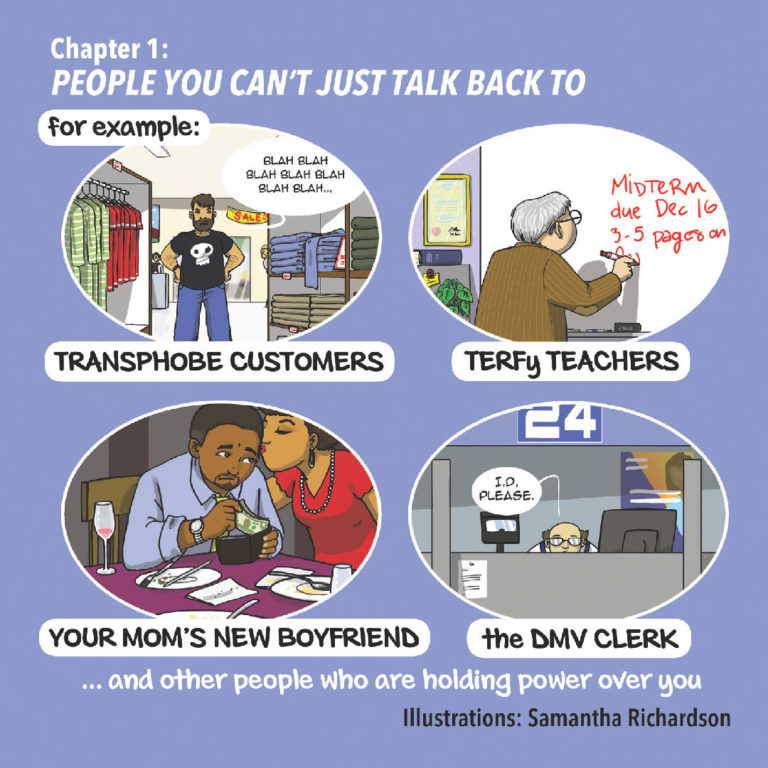
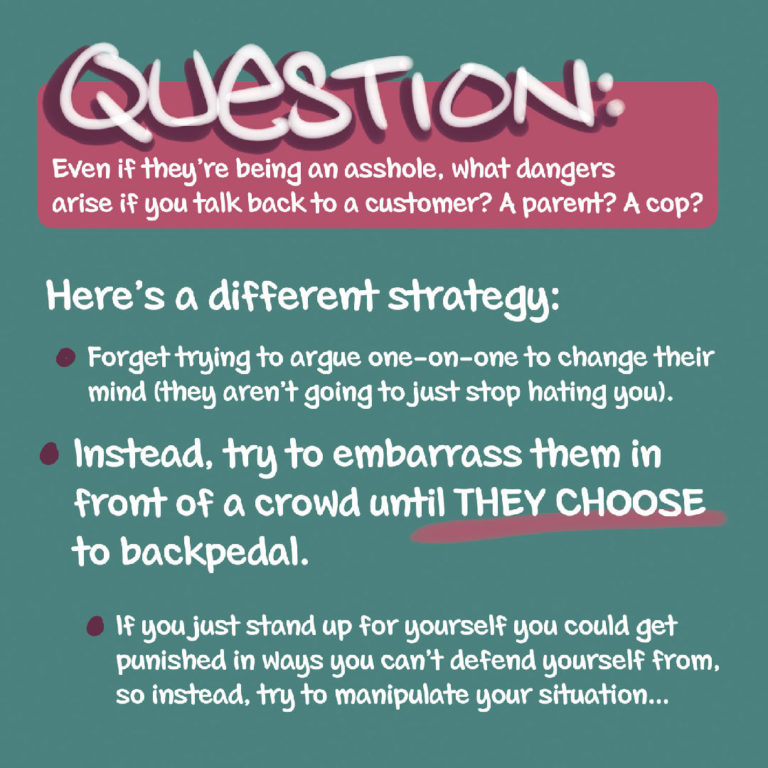
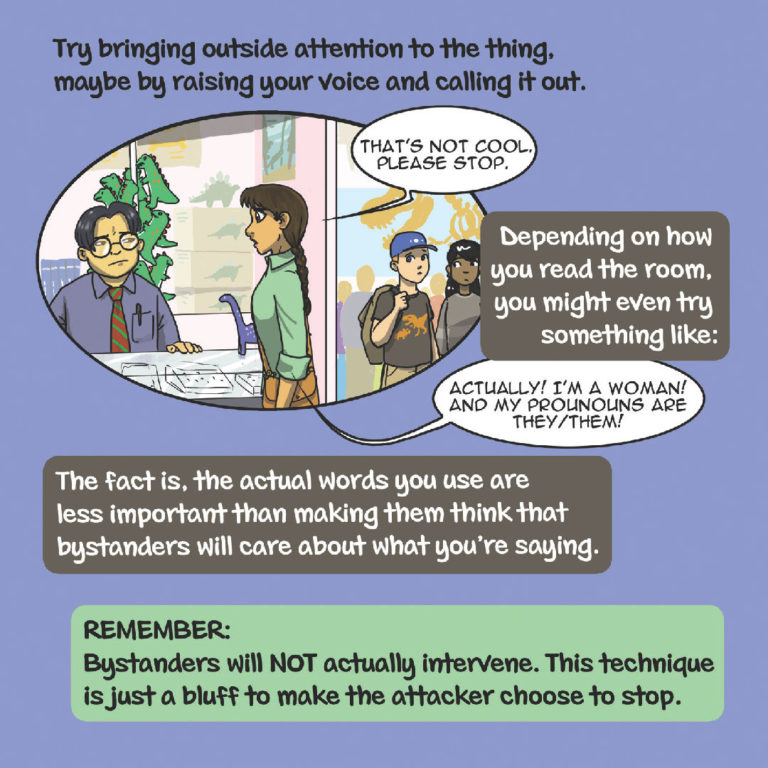
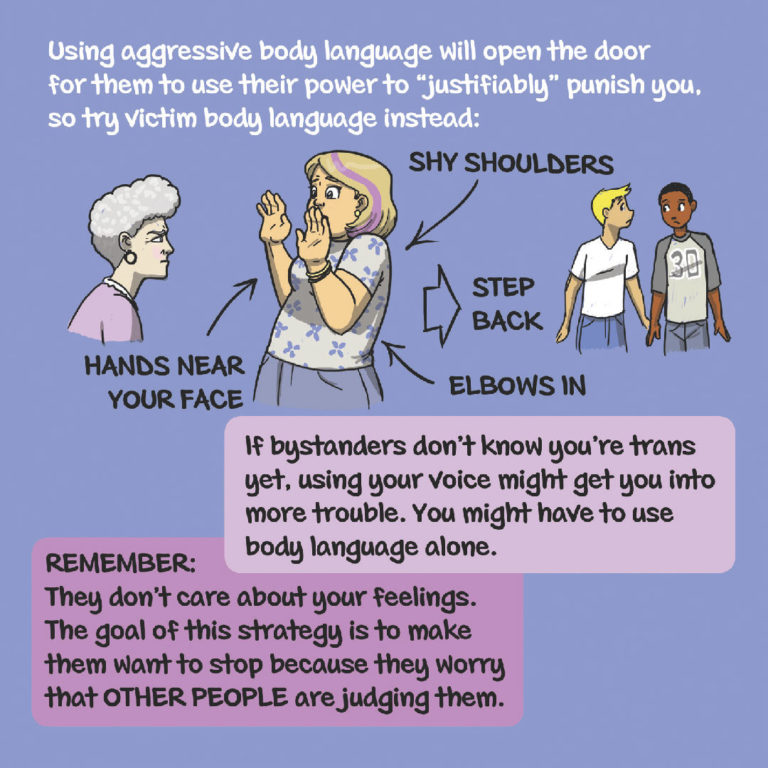
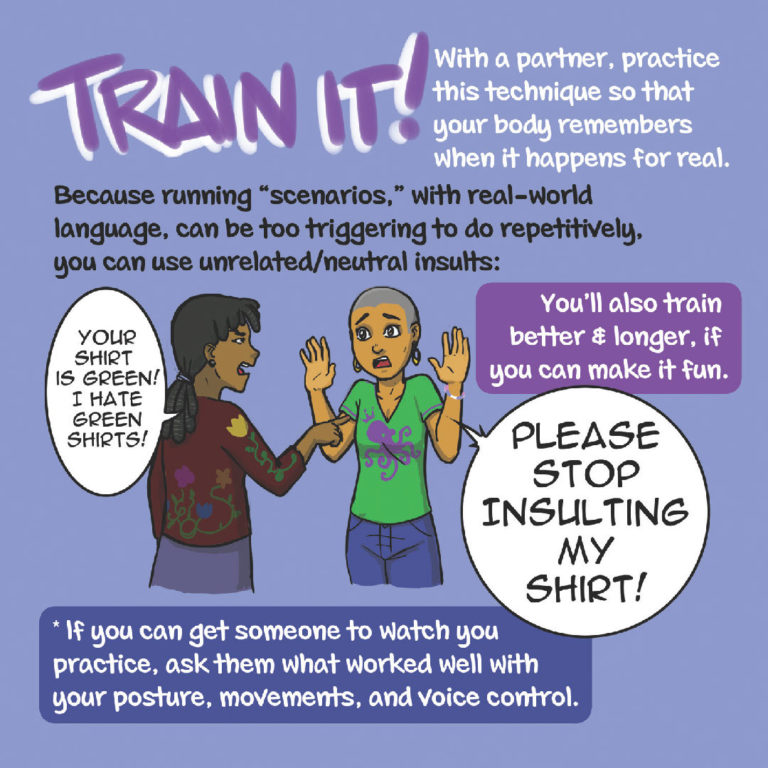
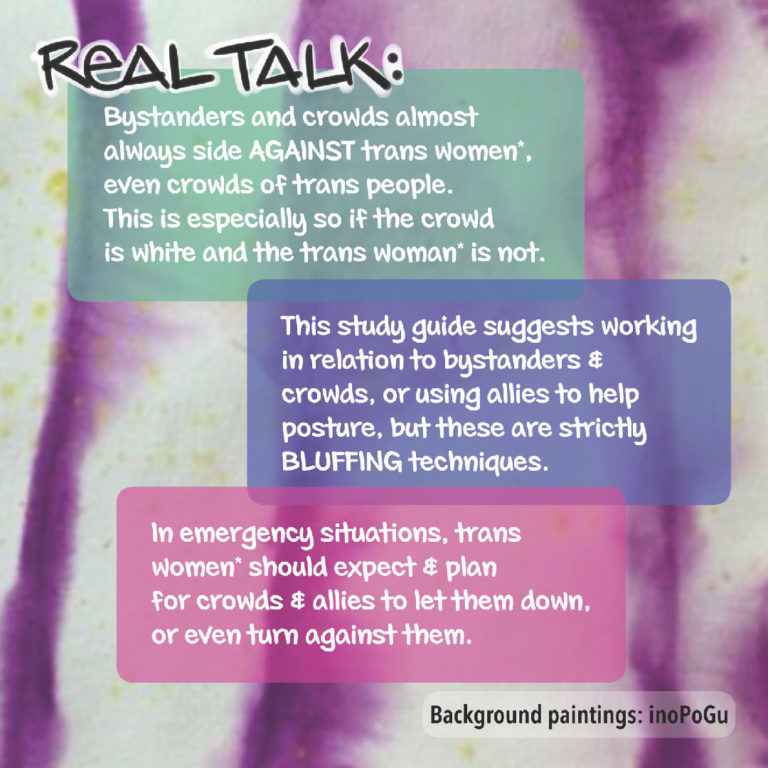

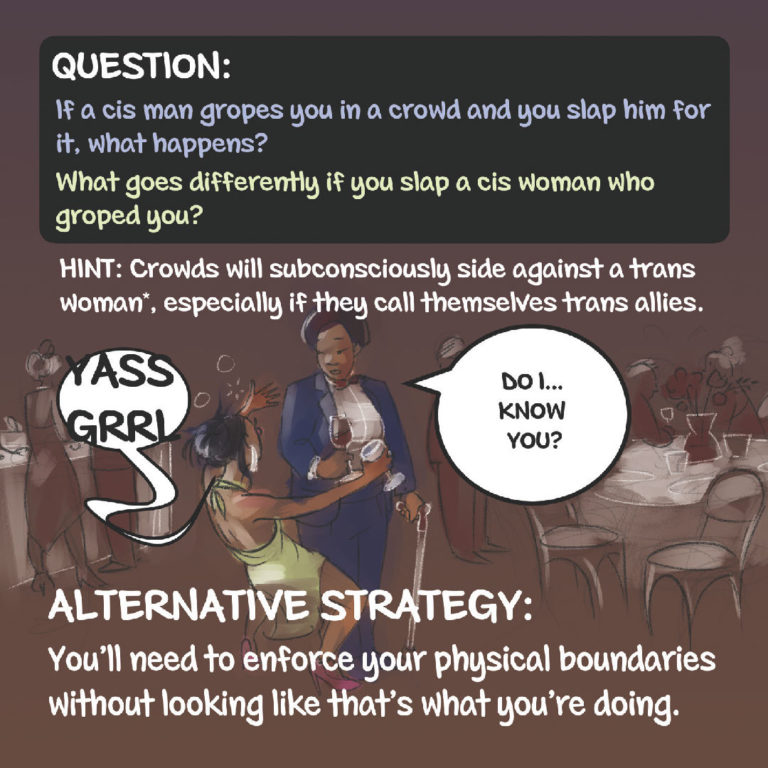
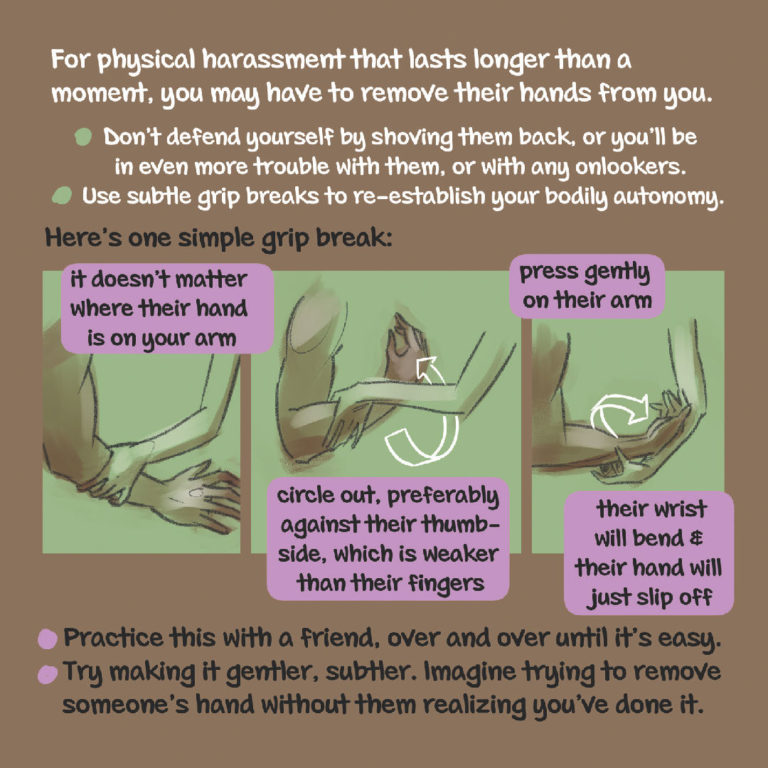
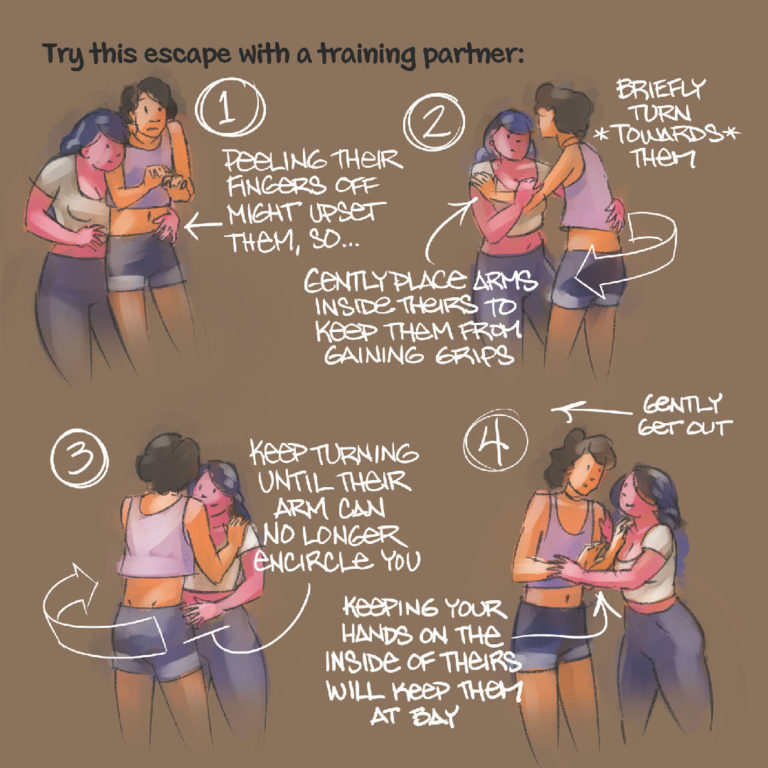

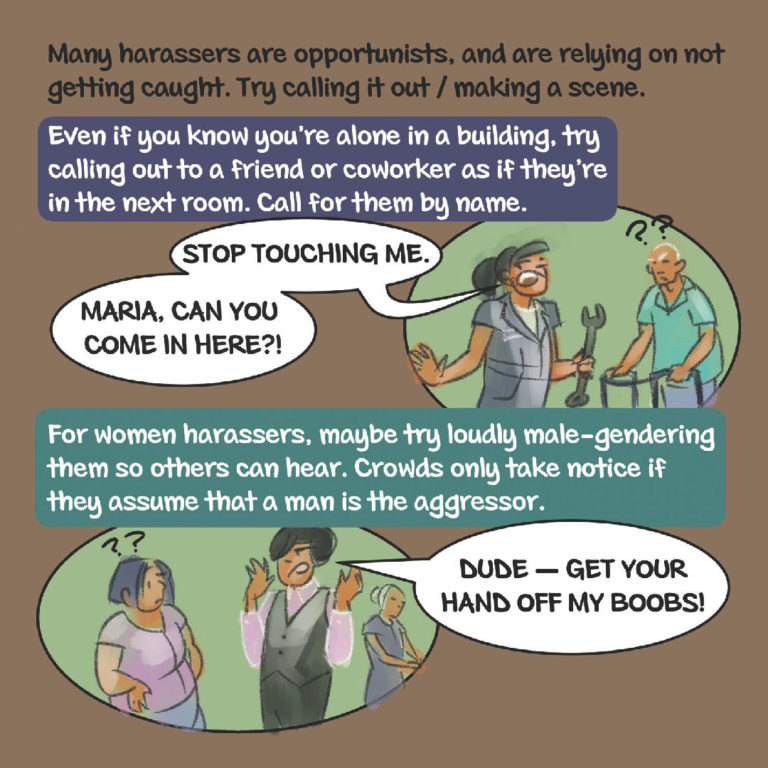

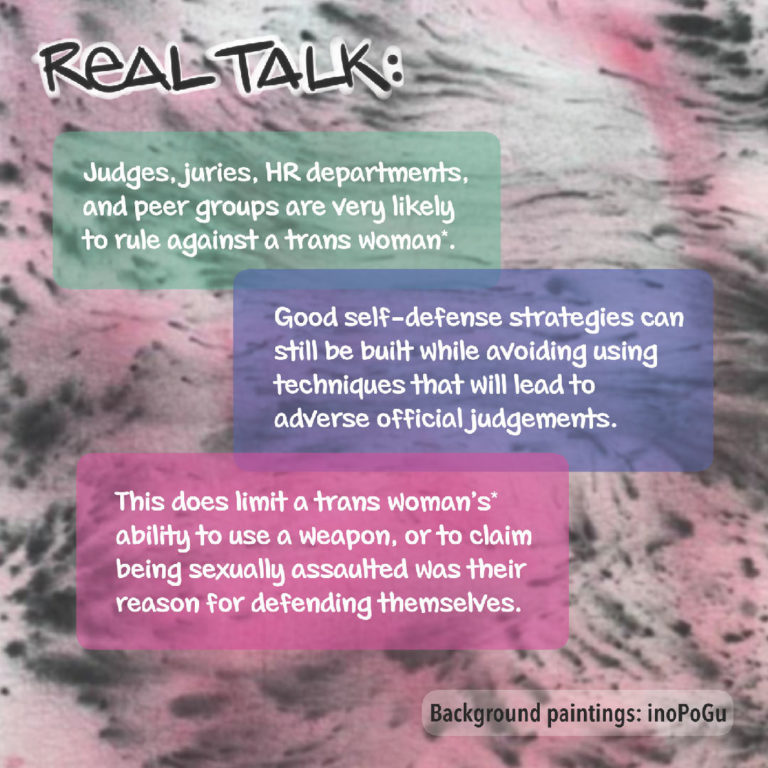
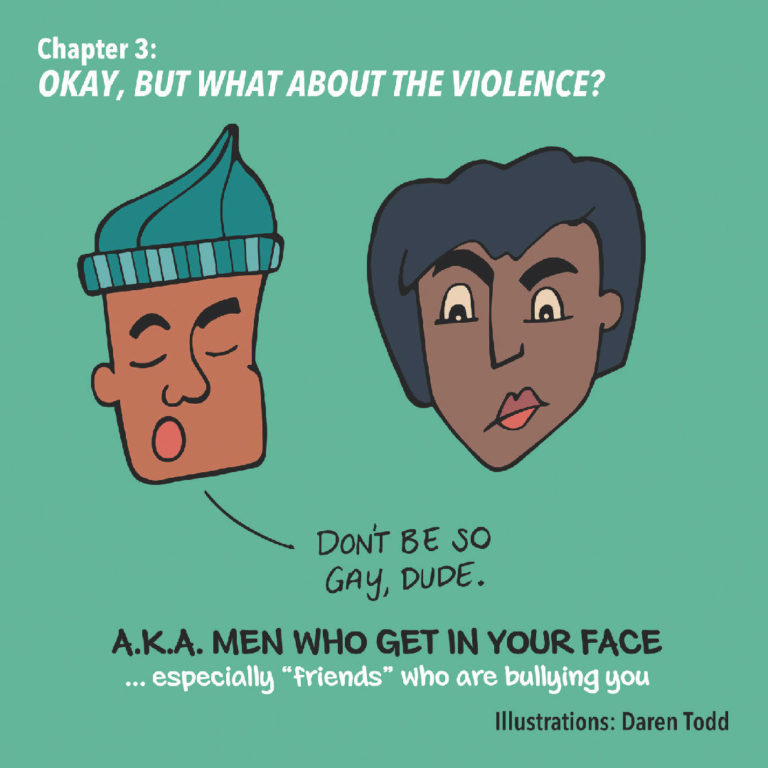

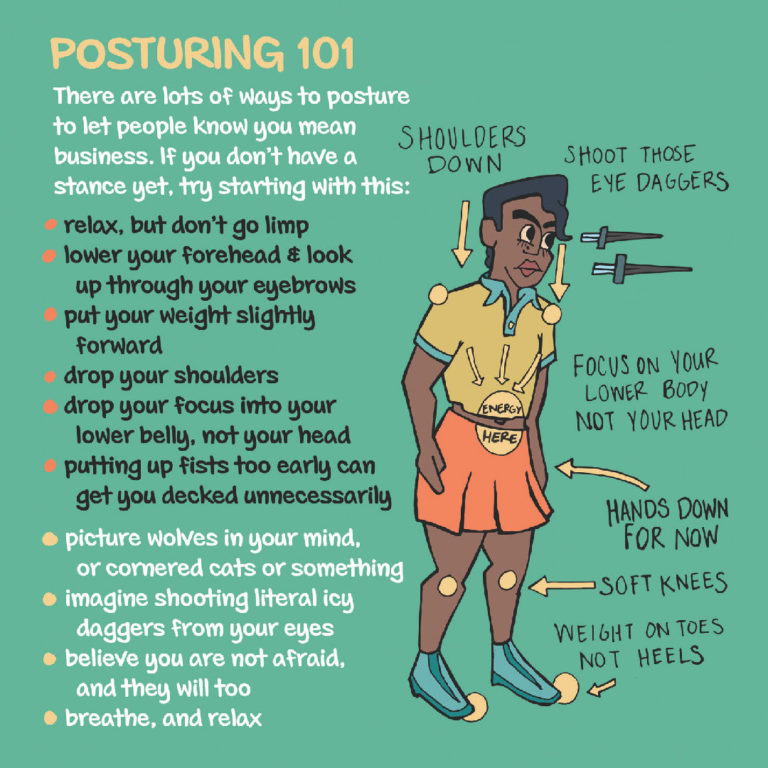
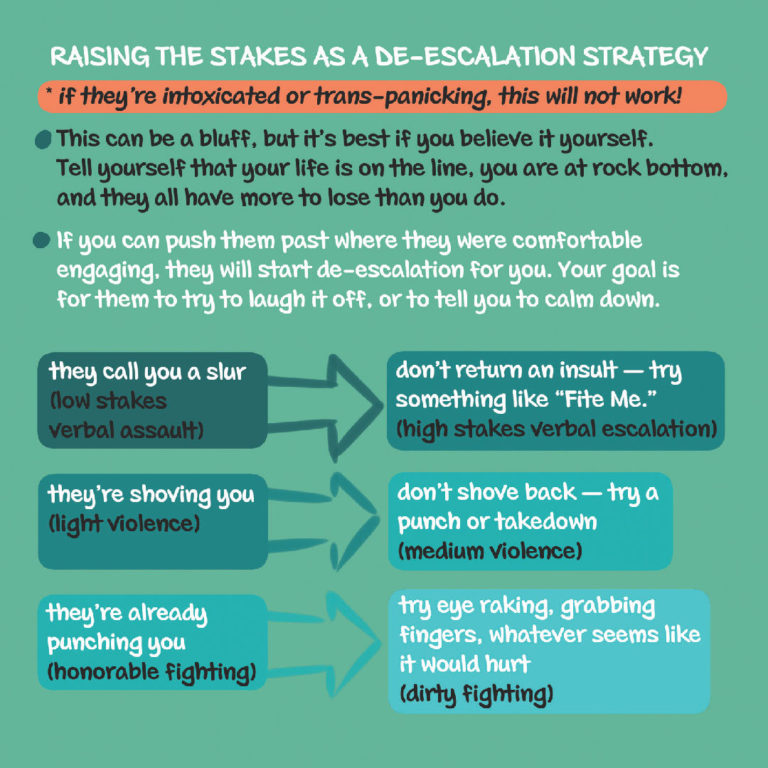


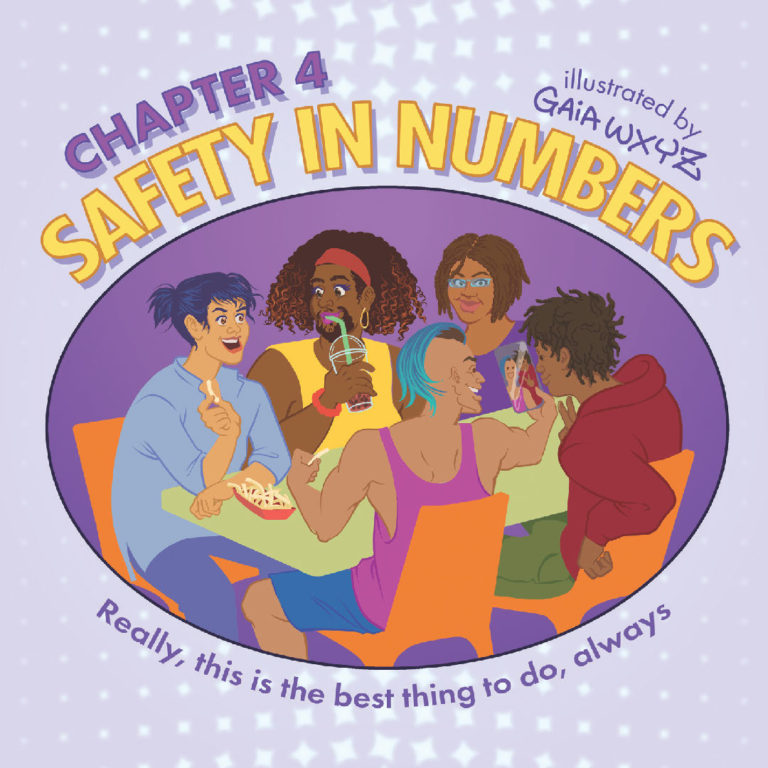
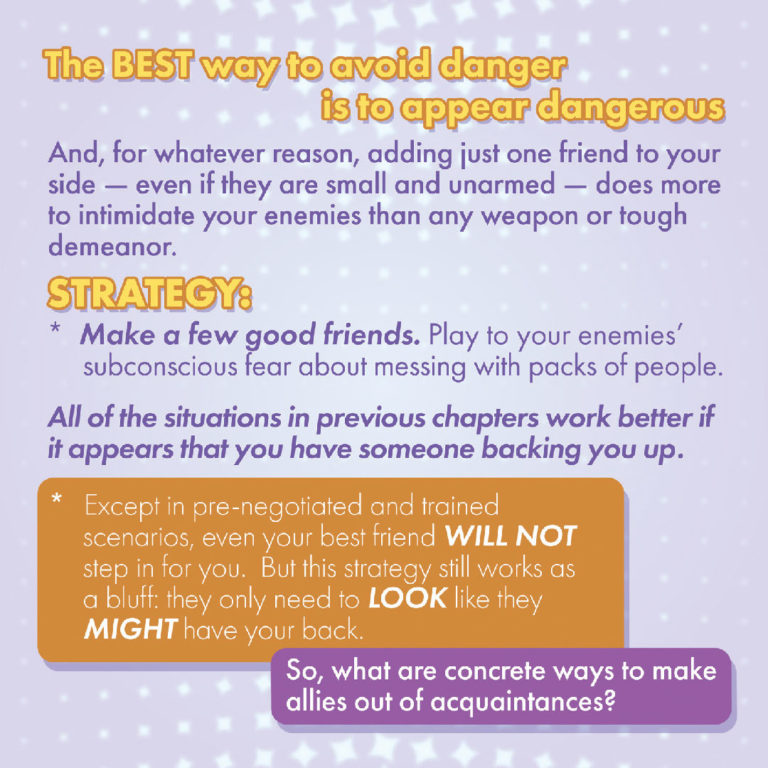
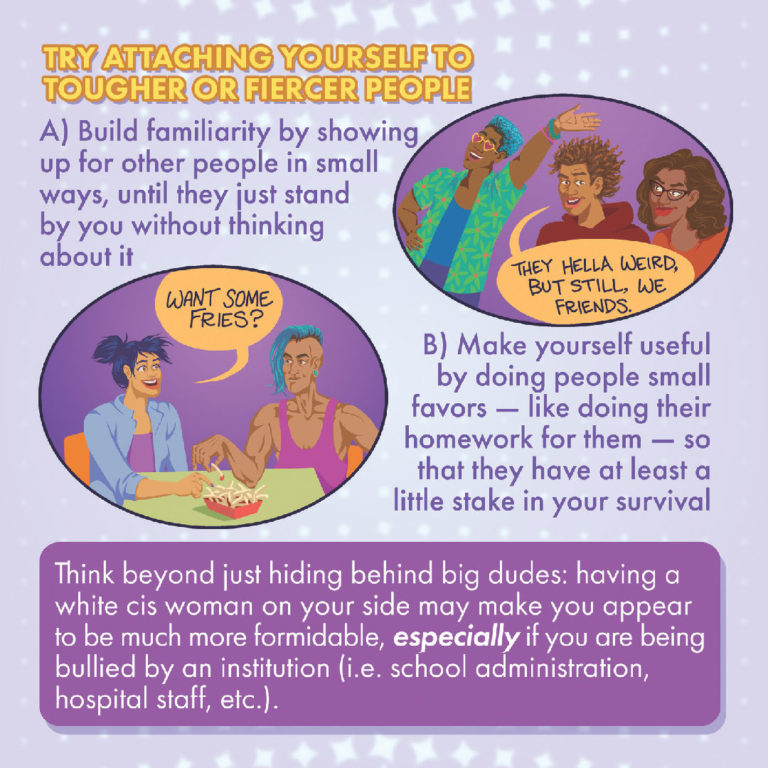
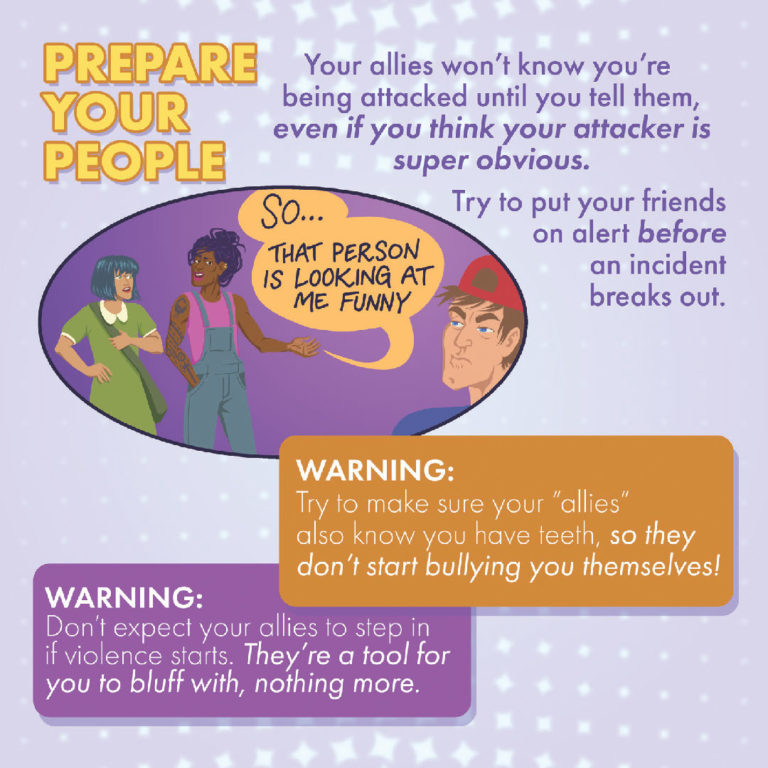

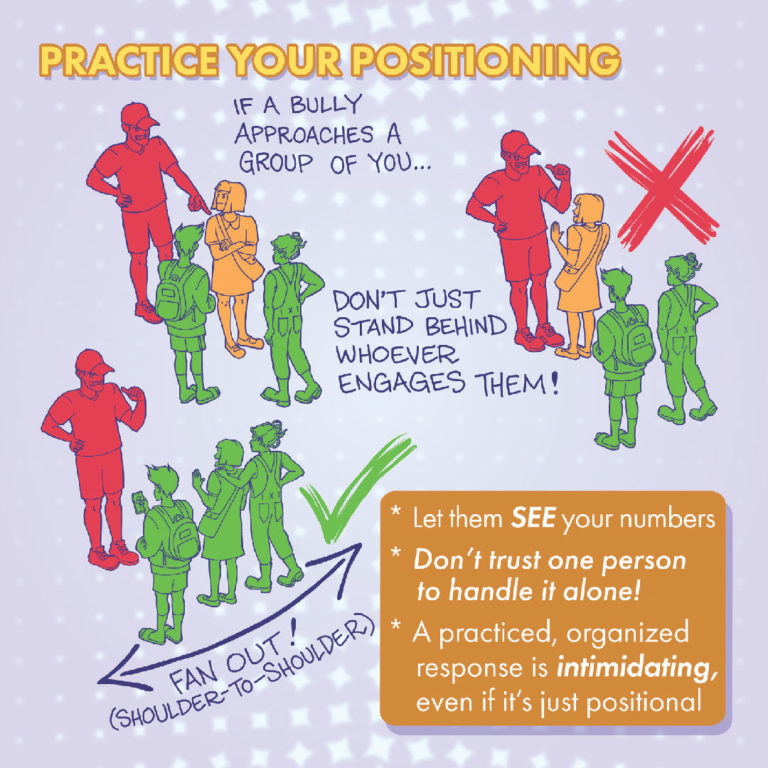

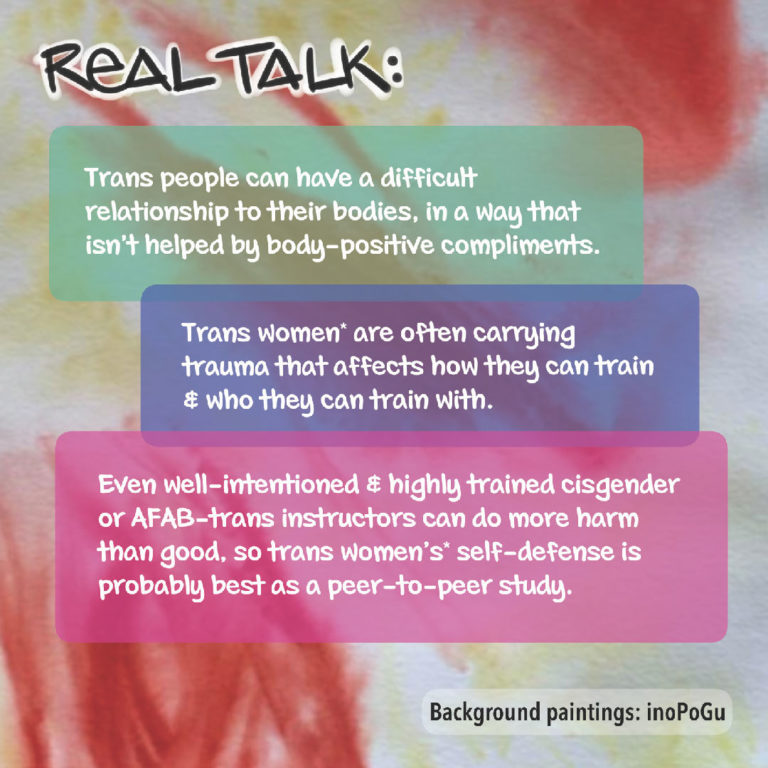

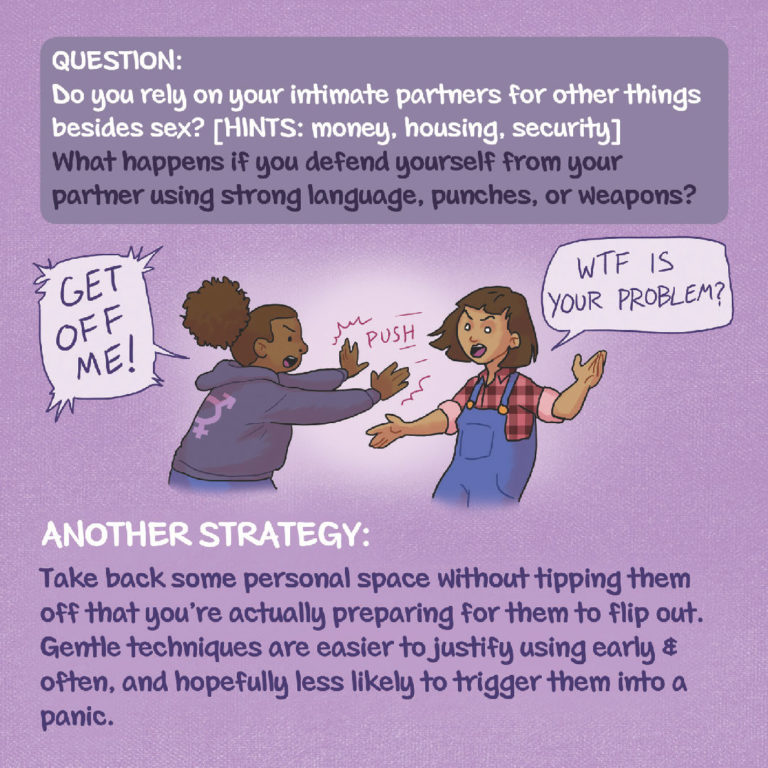
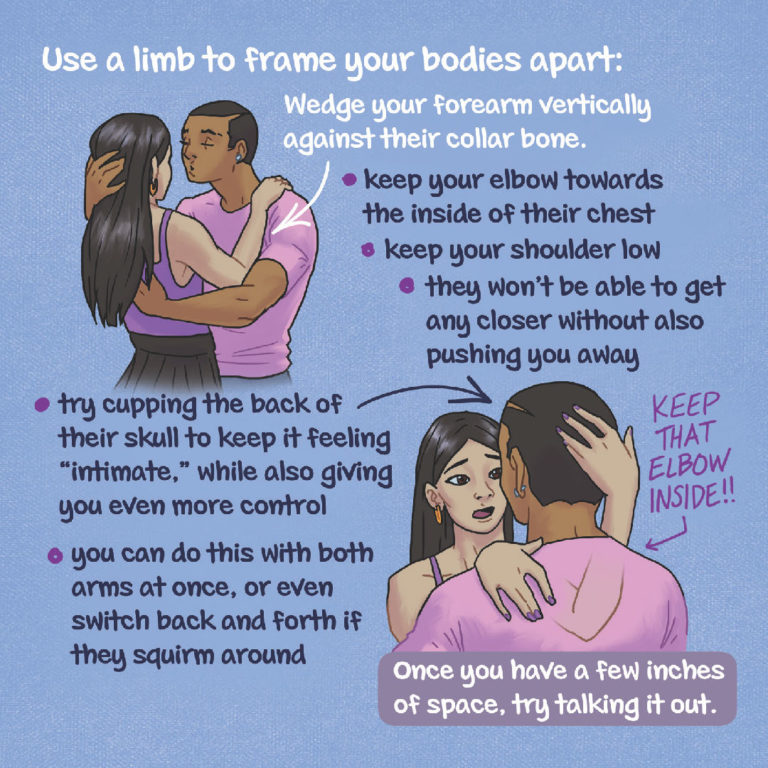
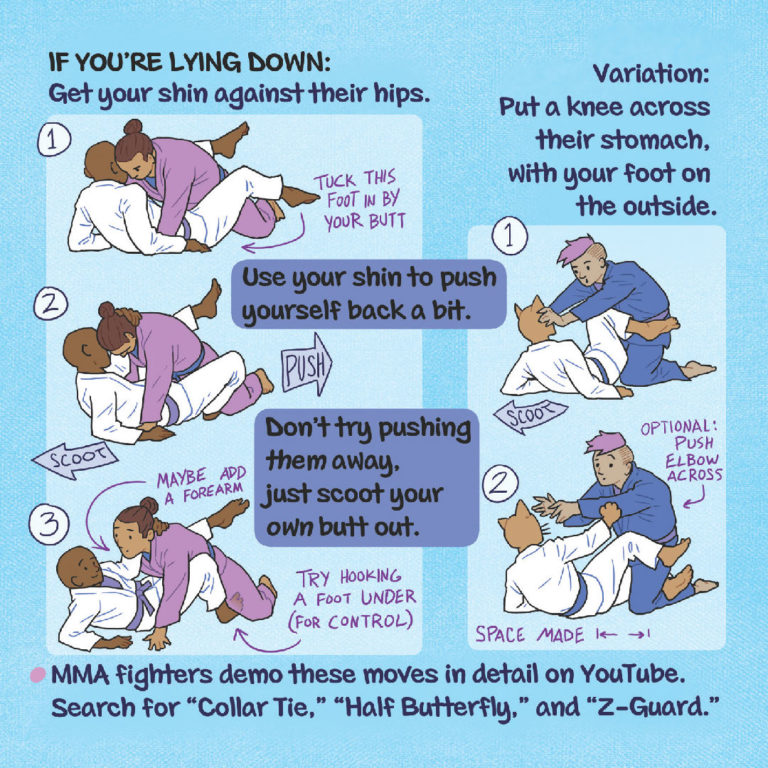




Resources
- A Self Defense Study Guide for Trans Women and Gender Non-Conforming / Nonbinary AMAB Folks Offers strategies based in lived experience, ranging from using body language and creating safety in numbers, to training Brazilian Jiu-Jitsu moves Includes chapters on how to handle people who have legal or financial power over you, cis women gropers, and menfolk bullies, along with instruction on how to back each other up as a group and how to pause a makeout.
- Scout Tran Instagram Scout Tran (ey/em/eir) is a founding member of the Degenderettes mutual protection club, and the Transfighters martial arts club. Ey was editor for the Self-Defense Study Guide For Trans Women, and produces the @queersneverdie TikTok channel, focusing on the consequences that trans-fems face when they defend themselves.
- Scout Tran @queersneverdie TikTok Offers self-defense tutorials.




